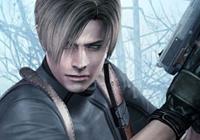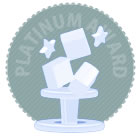Resident Evil 4: Wii Edition (Wii) Review
By Mike Mason  27.08.2007
27.08.2007

Capcom’s Wii support has been pretty slow, with only a handful of titles announced and just one of those looking like it has true potential to be a fantastic game (we’re looking at you, Zack and Wiki). While Resident Evil 5 makes its way to Xbox 360 and Playstation 3, Wii owners are left with lightgun-esque shooter Umbrella Chronicles, but there is something else that Capcom has sent our way: Resident Evil 4. Oh, we’ve already had that one. Oh well.
Here we are then, clutching one of the biggest Wii games to our chests, which just so happens to be yet another port, and one Gamecube owners have had before at that. It also just so happens, though, that the original wasn’t exactly the bane of quality in gaming and was, in the eyes of many, one of the better games to be released last generation. Well, then, is Leon S. Kennedy’s second dance with evil worthy of having a third console version released? Can this new version really offer us much more than it did the first time round? Is the game really still that good? Yes, yes, yes.
At its core, this is the same game it ever was. You’re ex-Racoon City Police Department’s Leon S. Kennedy, survivor of the Raccoon City outburst (way back six years ago in Resident Evil 2), and you’re in Spain – sorry, a remote village in an unnamed country – on a mission to recover the US President’s daughter, who has gone missing and been tracked down to this tiny village. Should be easy enough, so the now government-trained Leon is packed off on his own, along with a couple of police officers as back-up, to get the girl and go home in time to catch a repeat of 24. Only, of course, it doesn’t turn out that way, as the villagers turn out to be part of a mysterious cult called Los Illuminados who have a quaint little dream of world domination. And they all have murderous parasites in their bodies that can launch out of their gaping necks should their heads happen to fall off. Another day in the special forces, then…

What this leads to is one of the most exhilarating gaming experiences you’re ever likely to have. The game that made big changes to the Resident Evil franchise, which look set to carry over to Resident Evil 5, the emphasis is removed from puzzles, back-tracking, ammo conservation and placed in all-American Hollywood action (it is not uncommon to hear singing of “Ameeericaaa” alá Team America when we’re playing this, what with all the slightly-unnecessary stunts and explosions), floods of enemies, set-piece after set-piece and a better-placed camera that makes the controls work more convincingly, stopping the characters having the disposition of tanks. Truly scary moments are limited to just one or two moments (and even those might not be considered scary by many, more tense), but an unwavering veil of tension hangs over you as you play. Put simply, it manages to remove many of the elements that make Resident Evil what it is – not least zombies – and make itself the most enjoyable entry into the series for many people.
The Gamecube version was good enough. The Wii edition adds more. Taking the extras placed into the Playstation 2 version (and of course still including everything that was present in the Gamecube original), such as the entirely new few hours of Ada side-quest Separate Ways and new special costumes, these are melded with the Gamecube version as though they were never apart. This alone is reason enough to pick up the Wii version if you’ve missed out on the Playstation 2 version, as Ada’s new side-quest adds insight into what else is going on behind the scenes of the game and allows you to take on some key-points of the storyline from a different angle. Capcom clearly weren’t satisfied though and did some more upheaving. Step in, Wii-specific controls.
The controls are the icing on the cake of a game that is already a masterpiece of design and pace. By utilising the Wii’s pointer, Capcom have been able to create a considerably more accurate way to smiting down your foes – while the analogue stick-controlled laser on previous versions was great, it feels poor in comparison to the reticule controlled perfectly by the Wii remote, allowing you to take a shot at any body part of your choosing with little to no effort, with a swift aim of the pointer and a press of A (once you’re in aiming mode by holding down B, of course – you still can’t run and shoot). This means that headshots and knee-cappings (to allow a healthy boot to the face of downed enemies, or a suplex) are plentiful. To give an idea of how much more accurate the controls are, it is possible to complete the Merchant’s shooting galleries far more quickly with the new controls, often in a go or two each, and sniping crows out of the sky is a cinch. You would expect this to make the game significantly easier, but the issue appears to have been gotten around by sparse droppings of ammunition in comparison to the original; still more than any other Resident Evil game due to its nature, but money appears to be a far more likely item to be found after enemy dispatches. The reticule is, thankfully, far less intrusive than screenshots may suggest, remaining a translucent white until you stop and aim, wherein it turns green, red when you aim it over something that can be shot (as the laser made a spot on shootable things in the Gamecube/PS2 versions).

There are also motion features to consider – in aiming mode, a flick of the remote will reload your weapon, in your knife stance swiping the remote delivers a satisfying slash to whatever hellbeast you’re fighting at the time, and a swipe when you have no such stance selected allows you an emergency knife slash, which moves more slowly than when you’re prepared in knife combat mode but can be very handy for getting you out of a tight spot when an enemy surprises you out of nowhere. Meanwhile, the nunchuk handles all of the movement: analogue stick for walking, Z-holding for running, C-holding for knife stance. It controls like an absolute dream, and after playing for just half an hour or so we found it difficult to go back to the more traditional control method (though if you are so inclined, you can plug in a Gamecube controller and play it that way, anyhow).
While these new controls could probably be considered the main selling point of this port, there is no denying that this is still one of the greatest games created in our eyes. Class pours out at every turn, from the opening village section, to the cabin siege, to the visit to the laboratories, and while zombies might be M.I.A. the variety of enemies in their place, from humans to parasites to giant bug…things, do not disappoint with their relentless hunting down of your avatar and increasingly gruesome ways to finish you off. The boss battles are also nothing short of superb, particularly the ones against the Right Hand Man and Krauser (now all the better due to the motion controls of the knife). It’s a testament to the development team behind it that we can still play through, on possibly around the 10th play altogether now, and see or do things that we have not before, whether it be finding a small object to shoot that we never knew existed, or an enemy acting in a surprising way that proves the intricacy of the artificial intelligence.

Using the features of the Wii, a more immersive game has been created. Rather than a rotation of the analogue stick, you now physically turn cranks by moving your whole arm (or wrist). Small new touches such as the implementation of the Wii remote’s speaker to add gun fire, clicks, knife slashes and radio beeps to the palm of your hand really make Resident Evil 4 more alive than ever, and using motion controls in QTE sequences makes far more sense than arbitrary button presses alone. While it’s a port, it clearly hasn’t been a quick one, and effort has gone into not merely replacing the controls of the original and making a passable effort, but enhancing them and promoting the game to even higher accolades.
Any flaws it has are presentational. It’s a shame that some effort couldn’t have gone into graphical enhancements, as this is pretty much the exact same game released on Gamecube visually – not a bad thing as it was beautiful in the first place, but Wii has the potential to do better, and it would’ve been nice to have seen some textures updated, for example. Indeed, dithering is present on smoke effects, which we didn’t like to see; though we’re unsure if it’s to do with the Wii or whether it’s because our TV was upgraded to the HD-variety since playing the Gamecube version on a standard definition set. It’s also infuriating to see a straight copy of the PS2 visuals in the Separate Ways extra, right down to the poor quality FMV sequences. Surely it couldn’t have taken too much longer to have bumped them up a bit and recorded the cut scenes in realtime with the engine?
Visual problems aside, though, this is an essential title, as we've said in two previous reviews. If you’ve not played Resident Evil 4 yet and own a Wii, this is the perfect time to hop on and enjoy the ride. Even if you have played both previous versions, this is worth a look to see how fantastic the controls are. A game that rarely stops for breath, is of consistent high quality, possesses all the cheesiness of past Resident Evils in Leon’s constant one-liners, has an agreeable cast of characters (including Ashley, the follower character that actually listens to you and does as she’s told, and the hilariously-voiced Merchant), with near perfect controls and a host of extras added on top, this is one game that shouldn’t be missed out and should be played at least once by every gamer. Everything positive we've said in our past reviews before still stands, but the addition of wonderful controls and extras makes this a better package than ever before. Here’s hoping that Capcom provide us with a spin-off in the same style now that we know how well it can work; Wii isn’t getting Resident Evil 5 for obvious reasons, afterall.

Cubed3 Rating
Masterpiece - Platinum Award

It’s extremely rare that we hand out the top score, but we’ve done it already for Resident Evil 4 and what we have here is a more refined version than before: all the extras, new controls far better than the original system, packed into a game that we’ll probably still be doing yearly playthroughs in 10 years. This is how you do a port, so kudos to Capcom for creating the definitive version of Resident Evil 4 – now make us a new game of this calibre.
Comments
Comments are currently disabled

 Sign In
Sign In Game Details
Game Details
 Out now
Out now  Out now
Out now  Out now
Out now  Out now
Out now  Subscribe to this topic
Subscribe to this topic Features
Features






 Top
Top

